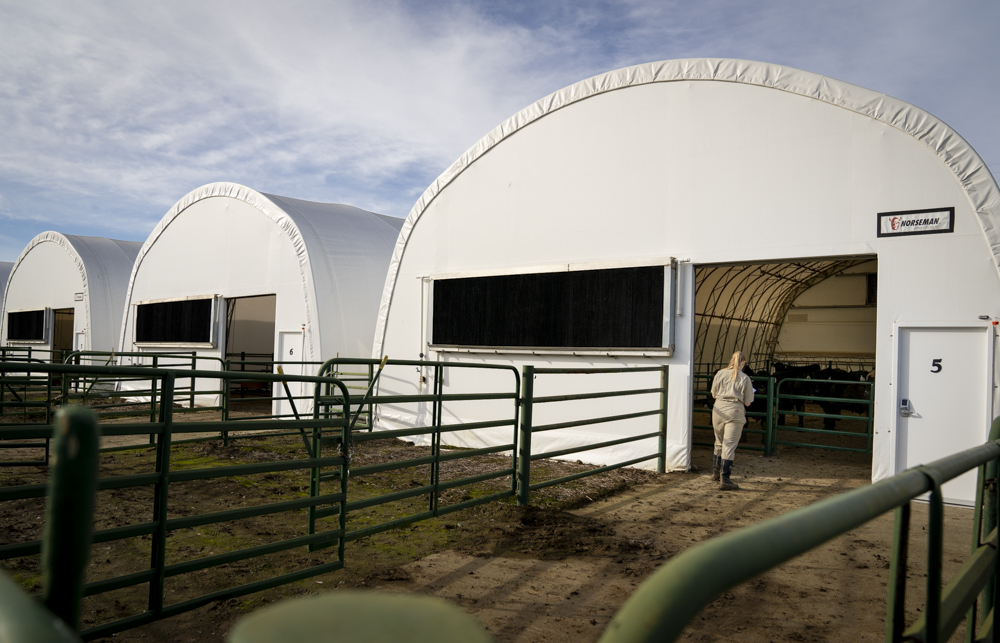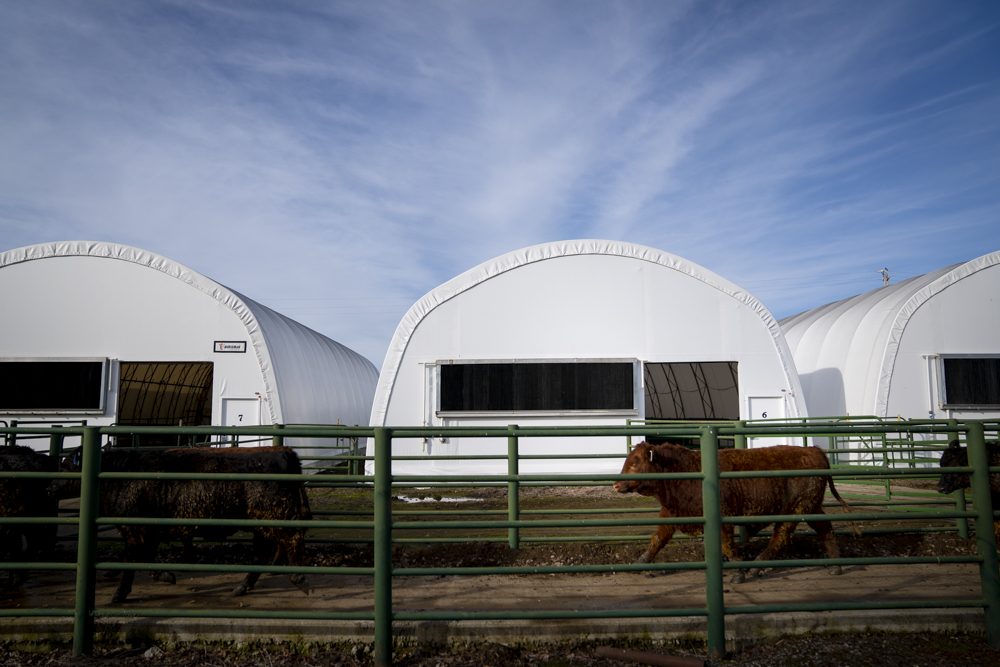
Can you trust private funding?
Agricultural research receives nearly 3X the amount public funding from the private sector
As the clock continues to wind down on irreversible climate change, it’s more important than ever to have all stakeholders involved and working toward a common goal. But when academic researchers partner with industry, eyebrows often are raised. That’s unfortunate and downright counterproductive.
When I was hired in 2002 by the University of California, Davis, it was for a new, one-of-a-kind position focused on livestock, the animals’ well-being and impact on our world. My job is a rare one. I teach undergraduate classes, guide graduate students, publish and otherwise do what professors do at major universities. In addition, I devote approximately 50% of my time to research and engaging members of the agricultural sector as a cooperative extension specialist focused on reducing the environmental footprint of livestock.
Nearly two decades after I arrived in Davis, my job continues to be a rewarding experience. It allows me to make a positive difference in my field of animal agriculture and air quality and climate at a time in which sustainability has become more than just a buzzword. It’s a necessity.
In the time I’ve been here, we’ve been successful in improving the health and welfare of the workers and livestock in animal agriculture, at the same time reducing emissions of greenhouse gases and other pollutants. I owe our success in large part to the relationships I have with stakeholders in government, NGOs, and the feed, livestock, and dairy sector. I couldn’t do my work without them, nor would I want to. When they share their experience with us – and we listen – it makes us better researchers. When we discover better ways of doing things and explain our results, it makes them better too. It’s a matter of mutual trust and respect, and a sincere desire to improve upon our current situation. Without that trust, I fail to see how we can expect livestock sectors to introduce improvements we gain through research.
And yet, working with industry partners is often viewed as a negative, with any results or conclusions that come out of such relationships considered fruit of a poison tree. The implication is that such relationships will result in the researcher being pushed to arrive at conclusions that are favorable to industry. I’ve lost count of the number of times I’ve seen work criticized, including my own, not because of the research itself, but because of the support that made it possible. It’s low-hanging fruit for those looking for a quick dunk on social media or in the press; those who often lack the zeal or expertise to discuss the science itself.
Granted, funding should always be a point of consideration when reviewing a paper, but it is, after all, only one factor. Shouldn’t the credentials of the researchers, the methods used, the reviewers’ opinions and other elements be equally or even more important?
In the United States, a majority of agricultural research and development funding comes from the private sector. According to the Economic Research Service of the USDA, private funding outpaced public funding by nearly three times. In 2014, the latest year we have statistics on, public research was $4.372 billion, while private funding was $12.263 billion.

The public sector likely wouldn’t or couldn’t pick up the slack if private funding were to disappear. That would be a significant loss, but it’s only one consideration. If we didn’t work with industry, developing and nurturing solid relationships, I believe we’d see much less innovation in critical areas. For example, I often work with the livestock sector to evaluate new tools that will help the industry operate more sustainably and improve the environmental impact of animal agriculture in California, the United States and even worldwide. I don’t think any of this would be possible if those of us on the research side were at loggerheads with our industry partners.
The fact is, we need each other; not just for money and certainly not for convenient conclusions. We must work together to find better ways of doing things and hopefully, eventual solutions to the global issue of climate change. After all, they’re the ones responsible for adopting and implementing the programs and changes we researchers are suggesting.
A recent example is a study that came out of UC Davis last year. With funding from industry partner Zoetis, we studied the effects of a feed additive – namely ractopamine hydrochloride or RAC – on ammonia emissions from cattle. Zoetis wanted us to put the additive to the test to determine if it can do what the company thinks it can. Zoetis wanted to know the truth. That is, to find out if the drug can in fact be helpful to the environment by lowering ammonia from beef production. Our findings were positive, and that’s good news.
Ammonia poses problems for the environment and for humans. Anyone who has used it as a household cleaner can attest to how noxious it is. More to the point, greater ammonia concentrations in the atmosphere pose a more pernicious risk to humans than simply being an irritant. Ammonia is a precursor to a number of chemicals (i.e., ammonium sulfate and ammonium nitrate) that can damage lungs and lead to various respiratory illnesses. Furthermore, ammonia contributes to soil acidity, lessening the productivity of agricultural land.
There are those who have issues with a corporation looking to a research institution to confirm or negate its findings. And yet, we see time and time again that when various entities come together to share ideas, conduct studies and work on solutions, we avoid a biased or rubber-stamp approach. Sometimes we go back to the drawing board; sometimes we arrive at breakthroughs and solutions. Regardless, it’s always time well spent.
Most of the funding for my research comes from the University of California and governmental agencies, including the Environmental Protection Agency and California Air Resources Board. I have at times received grants from members of the livestock sector. It is not the main source of funding for my research, neither is it unusual or suspicious that these entities would be interested in supporting studies to help them better understand their environmental impact and possible solutions to some of the issues they face. This type of collaboration between academia and the private sector happens routinely, and it’s been the impetus for a good many advancements, discoveries and inventions we wouldn’t want to live without. And let me be clear: The funding pays for student researchers, post-docs, facility use, university costs, equipment and many other research costs. It doesn’t line anyone’s pockets, mine included.

The CLEAR Center is supported by the University of California and by organizations, namely IFEEDER, which is the public charity arm of the American Feed Industry Association. The CLEAR Center is proud to earn support from the feed sector – and others – for many reasons. Chiefly, it highlights the trust the sector has in the work we do at the CLEAR Center. As mentioned earlier, that trust is key to believing in and implementing solutions that will help us fight climate change and address other serious issues. After all, the livestock sector as a whole is responsible for a measurable share of greenhouse emissions and other environmental impacts, and therefore, has a responsibility to provide resources to help mitigate those.
I could sit in my office and publish white papers weekly on how to reduce emissions on farms, but how effective would that be? Instead, I choose to be out in the field, relating to the companies, operations and farmers who are doing the important work of feeding the world. The very ones who need to implement changes so we can mitigate environmental concerns and continue to produce food. The trust I’ve built working with the sector will help ensure these technological advances are implemented.
Animal agriculture is not the main driver of climate change, despite what we’re often told. That notwithstanding, it does in fact contribute to climate change, which is why I show up day in and day out to help farmers reduce that contribution. We need the livestock sector involved as we work to find ways for it to curtail its greenhouse gas emissions. It is completely sensible to have those responsible for emissions as part of the process to find solutions. Barring certain stakeholders from the discussion isn’t fair. It isn’t even smart.
I welcome anyone to scrutinize our work; it stands on its own merits. In the meantime, my motivations are clear: to feed a growing world and to work with all stakeholders to ensure that we can do so without destroying our planet.
On that critical, all-important journey, there is a place for all.

Study from Mitloehner lab evaluates effect of feed additive on ammonia emissions in feedlot steers
Mitloehner lab study tests potential of Zoetis' Actogain 45 to reduce ammonia emissions in feedlot steers and finds the RAC supplement able to reduce emissions in addition to improving animal performance.
